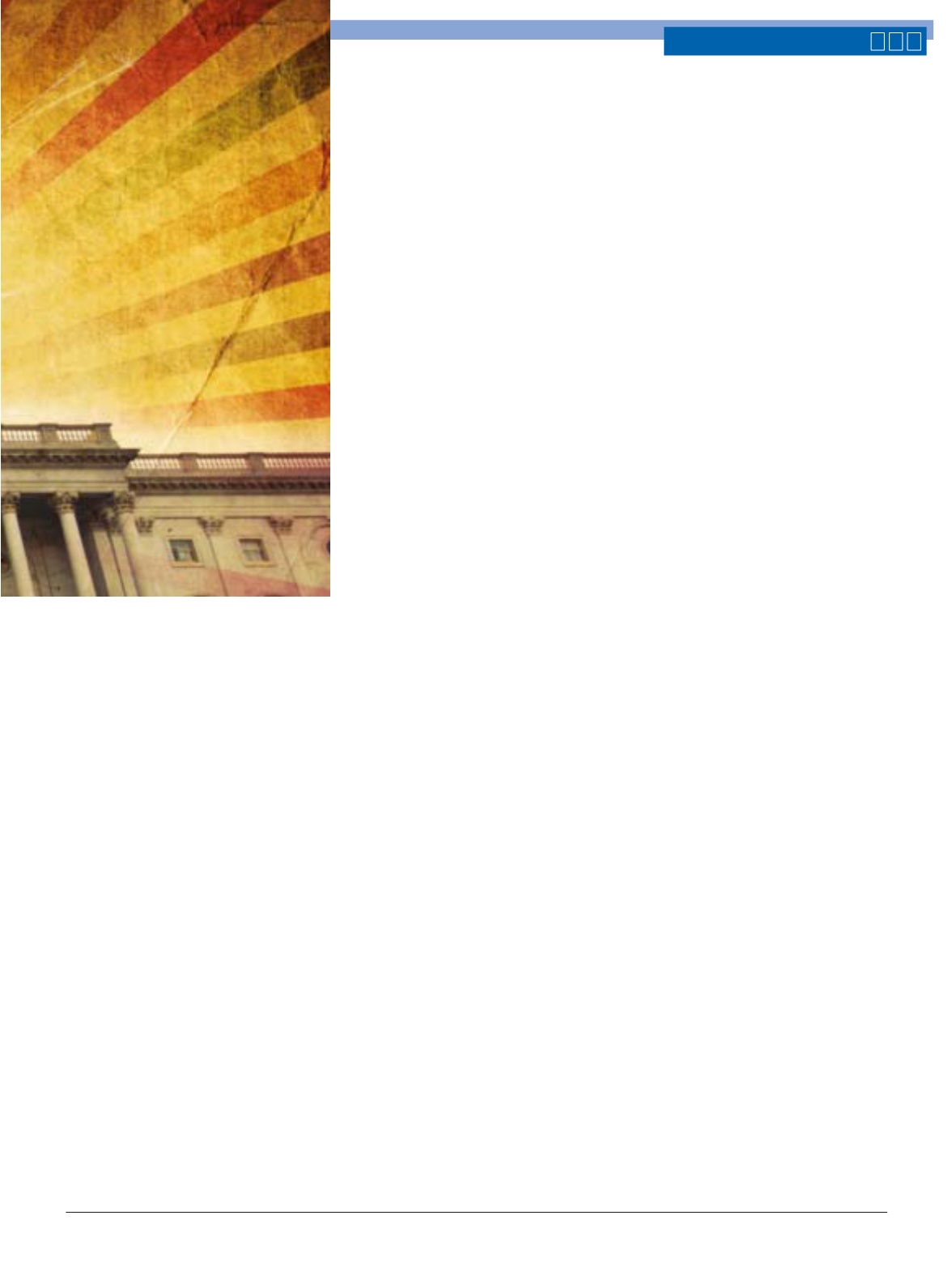
September 2013 • 27
between $20-$25 trillion. Today the deriva-
tives market’s notional value exceeds $600
trillion. Even then, there had been episodes
of fraud. Bankers Trust was a large over-the-
counter derivatives dealer, and it became
clear, through suits brought by some of its
customers—primarily Procter & Gamble
and Gibson Greeting Cards—that Bankers
Trust had defrauded some of its derivatives
customers. Second, there was evidence of
manipulation in the markets. Sumitomo
Corporation had managed to manipulate
the world market in copper, in part using
over-the-counter derivatives to disguise
its operations and fund them. Later, and
after the fact, there were other incidents of
market manipulation discovered involving
Enron and electricity markets, Amaranth
and natural gas markets; BP/Propane and
the propane markets; as well as crude oil.
We can never forget that concerns were
raised about these unregulated, rapidly
growing markets that were character-
ized by a lack of transparency, unlimited
leverage, and interconnections between
large institutions through counterparty
credit risk. Those features of the market
appeared to create the potential of systemic
risk, as was later confirmed in the financial
crisis of 2008.
However, much of the deregulation
of the derivatives markets under the
Commodity Futures Modernization Act
of 2000 (Pub.L.106-554) remained unad-
dressed until the enactment of the Dodd-
Frank Wall Street Reform and Consumer
Protection Act of 2010, simply referred
to as the “Dodd-Frank Act.” Building on
the reforms included in the 2008 Farm
Bill, Congress used the Dodd-Frank Act
as a means to further address the crisis of
opacity, instability and diminished con-
fidence in the derivatives markets and to
address factors that lead to the 2007-2008
bubble in commodity prices.
The financial crisis that began with
the fall of Lehman and a cascade of other
powerful financial institutions, leading
ultimately to the loss of more than $12
trillion of national wealth, the loss of mil-
lions of American jobs, the loss of value
of millions of American homes, 401-k
plans and pensions is why we need the
Commodity Futures Trading Commission.
The nation needs commodity markets that
are free of manipulation, free of exces-
sive speculation, fully transparent, with
participants accountable for their behavior
and activities and properly overseen for the
benefit and protection of consumers and
taxpayers. Hopefully, we have not forgotten
what the absence of effective oversight and
regulation has wrought upon the nation
as we continue to struggle to recover from
the greatest threat to the nation’s economy
since the Great Depression.
When accepting the John F. Kennedy
Profiles in Courage Award in 2009, former
CFTC Chair Brooksley Born stated, “Special
interests in the financial services industry
are beginning to advocate a return to ‘busi-
ness as usual’ and to argue against the need
for any serious reform. We have to muster
the political will to overcome these special
interests. If we fail now to take the remedial
steps to close the regulatory gap, we will be
haunted by our failure for years to come.”
MANIPULATION AND
EXCESSIVE SPECULATION
Speculative position limits are impor-
tant in preserving the integrity of the
commodity markets and the needs of
bona
fide
hedgers. Such limits serve to prevent
market manipulation (such as corners and
squeezes) and unwarranted price swings
associated with excessive speculation.
Therefore, our coalition strongly supports
the decision of Congress to mandate specu-
lative position limits under Section 737 of
the Dodd-Frank Act.
The CFTC approved a final rule
establishing mandatory position limits on
October 18, 2011. This rule was to go into
effect on October 12, 2012. However, the
rule was vacated by a District Court Judge
on September 28, 2012 and the decision
is currently under appeal. Our coalition
strongly supports the immediate imple-
mentation of mandatory position limits and
believes that the intent of the Congress was
clear and unambiguous in this regard. On
April 22, 2013, we filed an amicus curiae
brief with the Court of Appeals and we are
confident that the District Court’s decision
to vacate the position limits rule will be
swiftly reversed.
Still,
the committee should examine
the efficacy of the October 18, 2011 posi-
tion limits rule, as well as the underlying
statutory authorities of the CFTC, in
preventing market manipulation and the
harmful effects of excessive speculation.
Specifically, members of our coalition have
expressed concerns to regulators that indi-
vidual position limits set forth by the rule
are too high, and that the rule only requires
periodic review of established limits (annu-
ally for agricultural contracts and biennially
for energy contracts).
In addition to individual speculative
position limits as set forth by the rule, an
effective way to prevent excessive specula-
tion from distorting commodity prices and
to restore the balance between commercial
hedgers and financial investors is to require
aggregate limits on all speculation as a
class of trader. In the forthcoming CFTC
Reauthorization Act,
the committee should
expand upon the existing Dodd-Frank
Act position limits mandate to require
the CFTC to establish class specific
limits on speculation.
We attach as Appendix “A” the list of
more than 100 independent studies that
point to the role excessive speculation
plays in the artificial inflation of com-
modity prices that is the focus of the posi-
tion limits rule.
INDEX FUNDS
Congress and the CFTC have yet to
adequately address the well-documented
harm caused by index fund speculation in
the commodity markets. In June of 2009,
the Senate Permanent Subcommittee for
Investigation (PSI) published a bipartisan
report by Chairman Carl Levin of Michigan
and ranking Member Tom Coburn of
Oklahoma entitled
Excessive Speculation in
the Wheat Market
.
The report concludes that the “activities
of commodity index traders, in the aggre-
gate, constituted ‘excessive speculation,’”
Continued …
Government Affairs


